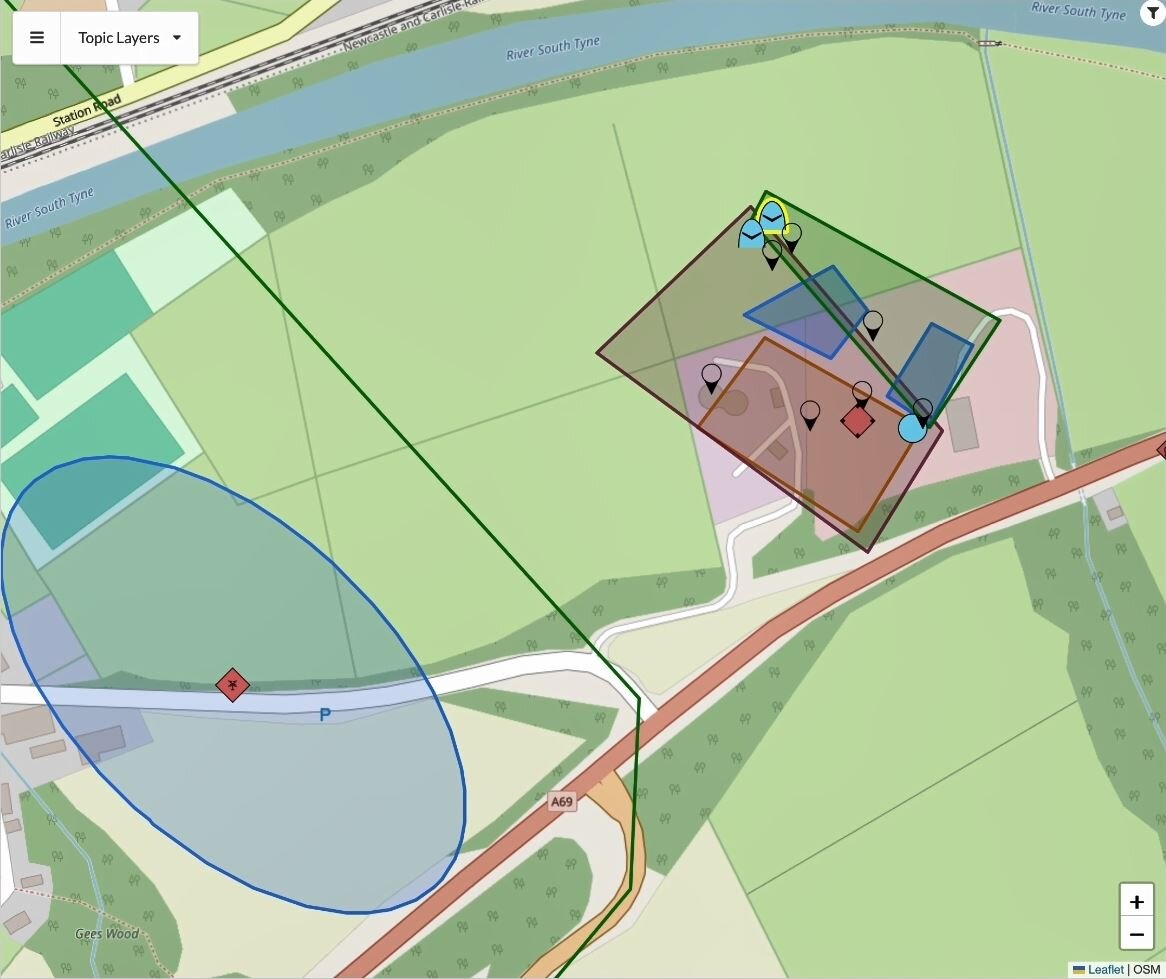Feature
Connecting the digital battlespace
Managing the fog of war with Big Data and Artificial Intelligence is a driving theme for modern militaries. Neil Thompson reports.

Autonomy is seen as a solution to effective Big Data analysis and dissemination. Credit: Gorodenkoff / Shutterstock
Militaries are increasingly turning to new technologies including artificial intelligence (AI) systems and data analytics to aid force integration, as modern battlefields become increasingly automated and transparent to combatants.
These same technologies have also shortened the window decisionmakers have to react to new situations or intelligence, or operators to enemy action. Big Data analytics and AI are also needed for decisionmakers to manage the sheer quantity of data now gathered on the modern battlefield, and allow units lower down the chain of command to perform vital battlefield tasks like predictive analysis, situational awareness, or threat assessments.
The UK government has even created a Data Strategy for Defence that sets data outcomes to be achieved by 2025, with the aim of giving UK forces a so-called Multi-Domain Integration and Information Advantage.
Other Western governments are following similar paths with their own military modernisation, in particular the US and China, and defence companies are responding to their clients’ demands.
Battlespace management tools
In response, private sector producers have created new tools like Battle Management Systems (BMS). These are emerging as important hubs in the modern digital battlespace, helping leaders to link up more closely with their battlefield assets and increase reaction times to changes in dynamic tactical combat situations.
BMS tools also enable commanders or operators to generate multiple choices for issues like resource management; or help them gain insight into enemy battlefield choices to lower mental burdens on commanders and increase their actionable response times.
UK defence prime BAE Systems has recently launched one variant of these products, its Battlespace Management and Intelligence System (BMIS) app, that can be deployed to wherever it can manage the live battlespace situation, connecting sensors, effectors, and decision makers.
With full knowledge of the battlespace, commanders can take rapid and effective decisions
BAE Systems official
The app can operate from devices starting from systems used by soldiers in the field up to those based at commanders’ headquarters which function to provide decisionmakers better oversight.
Rather than managing any forces itself like an AI program running a fleet of autonomous drones, BMIS accelerates the planning cycle for human commanders and operators. The app responds to a user’s stated goal, building a plan which is then checked for validation before it is enacted on the ground.
The app’s planning function combines a pre-established doctrine in the form of user-managed Tactics, Techniques, and Procedures with an overview of the assets being managed and an operator or leader’s stated objective. The system then uses these three lenses to suggest a course of action that it derives algorithmically while considering any optimisation constraints that are required to maximise or minimise a specific attribute.
These factors could include things like time constraints, costs, load balancing for flight hours against airframes, and so on and so forth.
A representative of BAE Systems’ Digital Intelligence business unit explained to Global Defence Technology that BMIS provides three broad tools to enhance battlespace management.

The BMIS is intended to integrated network solutions for modern militaries. Credit: BAE Systems
First of these is a knowledge manager function, which provides users with decision support by delivering as close to a real-time view of all source intelligence and information, and a shared view between all involved parties, such as intelligence analysts, sensors, effectors, and decision makers.
“There is also its threat manager [function]. [This] incorporates our automated threat detection capability, which is deployed and live in UK law enforcement and enables commanders to rapidly understand enemy courses of action (CoAs) while limiting their cognitive burden,” the BAE Systems official said.
“With full knowledge of the battlespace, commanders can take rapid and effective decisions on how best to achieve their mission objectives,” the official added.
Finally, the BMIS system has an automated planning function, which provides CoAs using established doctrine and user-selected appropriate optimisation factors, constantly informed by live intelligence and decision support tools.
The military Internet of Things
In the US, the Department of Defense (DoD) initiated its Joint All-Domain Command and Control (JADC2) concept earlier this decade, which aims to merge every unit and sensor from each of the country’s different military branches into one interoperable network allowing for seamless data transmission and networked fire systems.
The JADC2 “is intended to produce the warfighting capability to sense, make sense, and act at all levels and phases of war, across all domains, and with partners, to deliver information advantage at the speed of relevance”, the DoD stated.
This has led to a greater stress on interoperability between all units within each branch of the country’s armed services, as well as between them. In turn, this has meant producers facing calls from US military planners to commit to open standards of military equipment design, to slash integration timelines between firms’ systems, and allow their programs’ new capabilities to be deployed more quickly.

The modern battlespace is a drawing data from multiple platforms. Credit: Northrop Grumman
The DoD has charged Northrop Grumman with developing parts of the JADC2’s vision of a militarised version of the Internet of Things. The firm’s multifunction sensor systems are key product in this effort, being less vulnerable to jamming than traditional tools like radar, while retaining the ability to communicate across networks and cover a wider area than radar.
In the air for example, Northrop Grumman’s Integrated Multifunction Mission Systems allows aircraft to combine signal intelligence and radar with electronic warfare capabilities, and communications systems run by control and resource management algorithms that allow the unit to carry out a number of tasks.
These include jamming resistant enemy radars; providing secure communications; carrying out electronic attacks on enemy systems; and providing passive sensor functions on the battlefield. The sensors carry out surveillance that flows back up the network to connect with shooters on the ground or elsewhere who can then attack any enemy presence detected.
What’s old is new again
Johanna Hutchinson, chief data officer at BAE Systems, pointed out that many of the underlying technologies that are now being scaled up have been in use in military or law enforcement circles for some time.
“Targeted use of AI in defence isn't new, in fact some of our products have been using it for decades. Eurofighter Typhoon relies on AI to maintain flight stability, for example,” she explained to Global Defence Technology.
Targeted use of AI in defence isn't new
Johanna Hutchinson, chief data officer at BAE Systems
“However, we are certainly seeing more use of general AI analytics on the battlefield to quickly make sense of data - if our customers can make informed and accurate decisions faster than their enemies, they can help keep themselves safe and complete their missions more easily.”
Like other defence companies, BAE Systems is seeing a seeing a significant uptick in both the data created and held, and its applied use in all areas of its business. In the increasingly connected modern world, the company recognises that the demand for multi-domain and edge capability is critical for its defence customers.
The company is helping Western forces collaborate across Nato by creating products that are designed to share data and communications networks, allowing allies to fight and win as a team.
BAE Systems’ platforms, systems and services provide protection across land, sea, air, space and cyber, connected by a digital thread that provides a vital military advantage.
“We're currently building our satellite cluster offering, Azalea, which is being built to deliver actionable intelligence from space. Instead of having to download all its radar, RF, and other data to earth before it's processed, we're putting AI capability on the satellites themselves. That way, they can get useful intelligence directly to where it's needed much more quickly,” Hutchinson said.

All domains are being effected by the increased importance of autonomy. Credit: BAE Systems
In addition, Hutchinson detailed that the company is developing a platform agnostic maritime autonomy “brain-in-a-box”, called Nautomate, while building autonomous vehicles such as the newly announced Atlas 8x8 ground vehicle in Australia, as the need for such capabilities proliferate across all domains.
“Autonomy has the ability to take on the dull, dirty and indeed dangerous jobs that humans currently have to do, so it will absolutely help protect people in the battlespace,” Hutchinson said.
Caption. Credit:

Phillip Day. Credit: Scotgold Resources
Total annual production
Australia could be one of the main beneficiaries of this dramatic increase in demand, where private companies and local governments alike are eager to expand the country’s nascent rare earths production. In 2021, Australia produced the fourth-most rare earths in the world. It’s total annual production of 19,958 tonnes remains significantly less than the mammoth 152,407 tonnes produced by China, but a dramatic improvement over the 1,995 tonnes produced domestically in 2011.
The dominance of China in the rare earths space has also encouraged other countries, notably the US, to look further afield for rare earth deposits to diversify their supply of the increasingly vital minerals. With the US eager to ringfence rare earth production within its allies as part of the Inflation Reduction Act, including potentially allowing the Department of Defense to invest in Australian rare earths, there could be an unexpected windfall for Australian rare earths producers.
